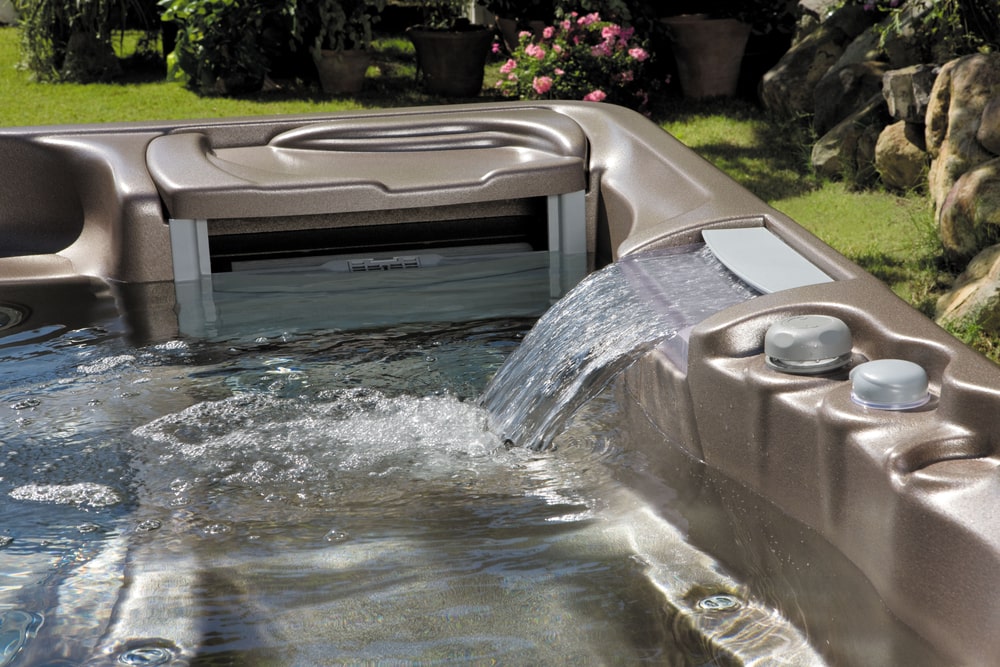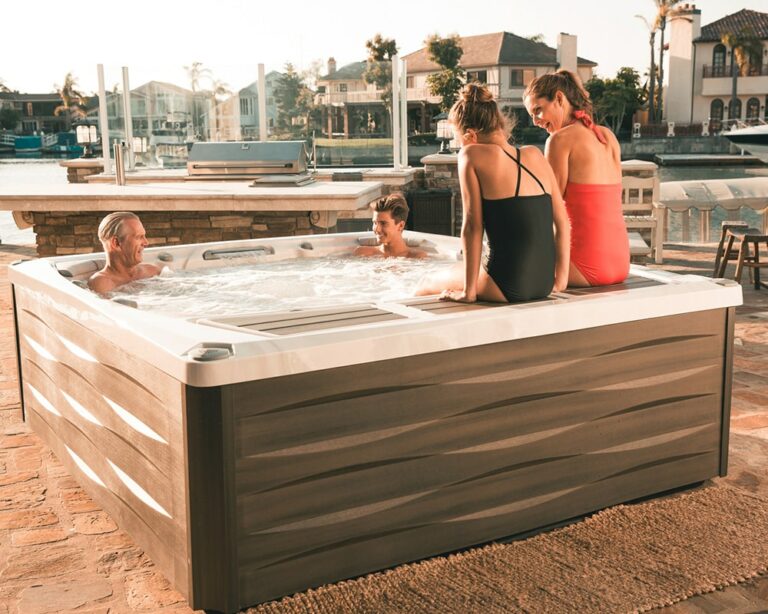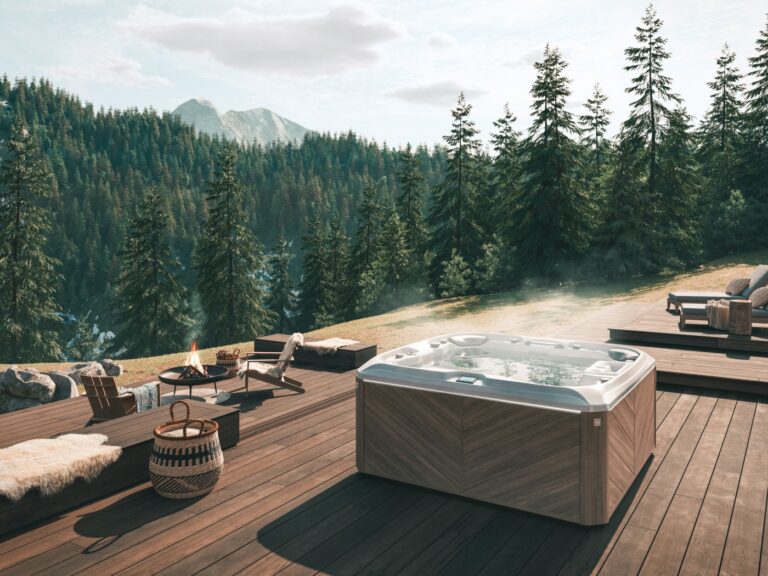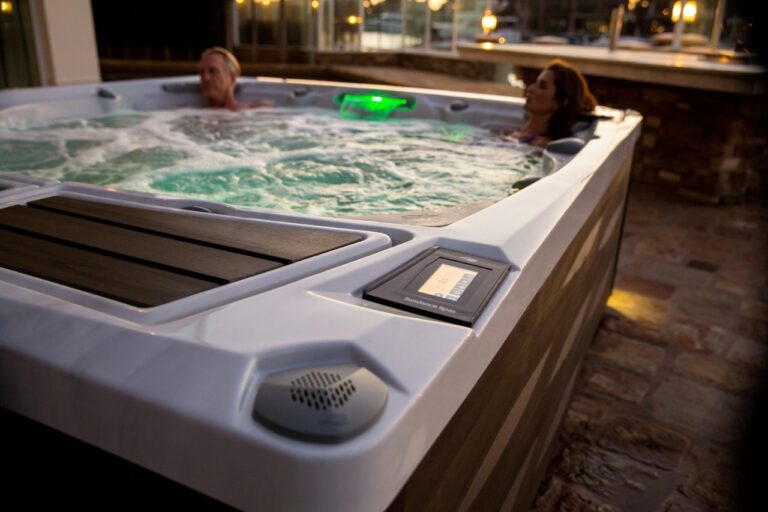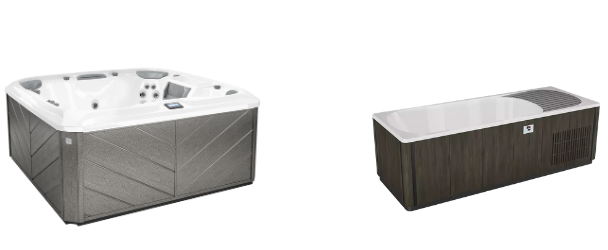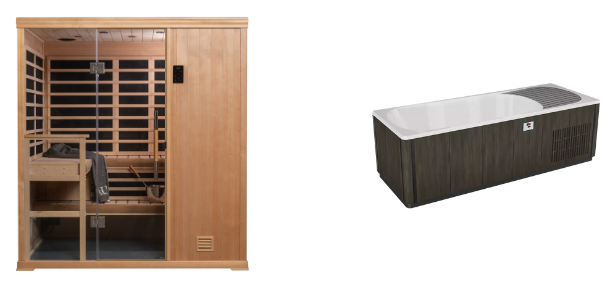Saltwater hot tubs and sanitizer systems have gained popularity in recent years and offer a unique approach to hot tub maintenance. At New England Spas, we aim to help our customers make informed decisions when it comes to hot tub ownership. In this guide, we’ll address some common misunderstandings we’ve found many hot tub shoppers have. Our goal is to provide accurate information on salt sanitizer systems to help you determine if one may be the right choice for you.
What is a Saltwater Hot Tub?
A saltwater hot tub is a hot tub that uses a Sodium Chloride (Chlorine) Generator as their primary sanitation system. Through a process called electrolysis, they separate chlorine from sodium and release it into the water. The presence of chlorine in the water kills and removes contaminants in the hot tub.
To put it simply, instead of adding chlorine directly to your hot tub, these generators turn salt into chlorine automatically.
Is Saltwater Sanitation “Natural”?
Salt is a naturally occurring element in nature; however, we find that to many hot tub shoppers, the implication of “natural” is that the system does not use chlorine. That is not true. As we talked about above, these saltwater sanitation systems turn salt into chlorine.
UV-C Comparison: A More Natural Approach
Let’s take a look at UV-C Filtration in comparison. UV-C systems use a combination of ozone gas and Ultra-violet lighting to sanitize the water and keep it clear and fresh. This system relies on natural processes in addition to chlorine.
Are Saltwater Systems “Set it and Forget it”?
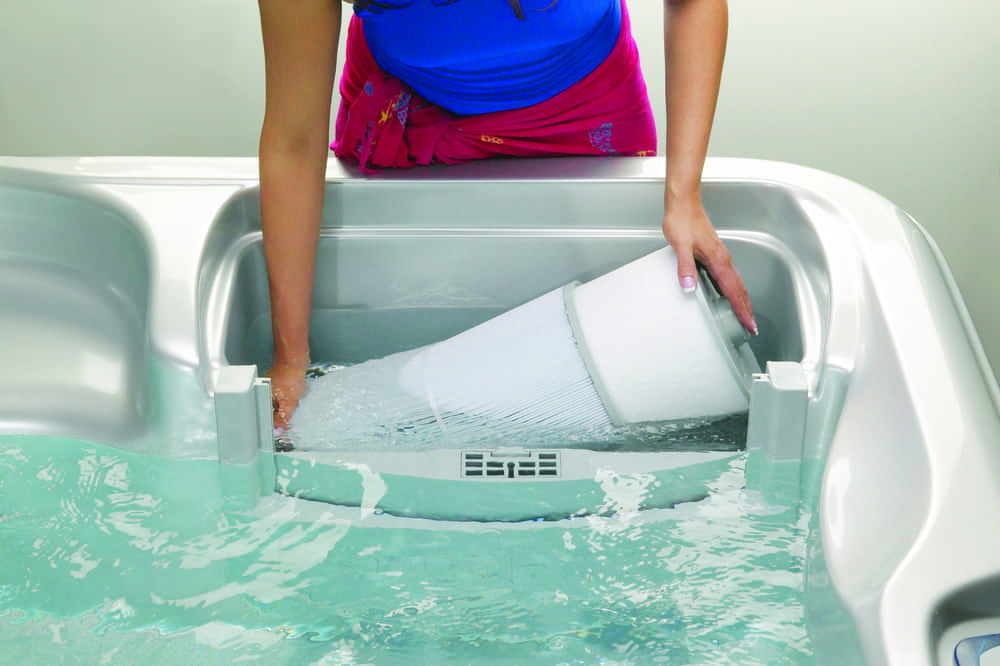
We have found that this is not usually the case, especially in the first few months of owning your spa. The salt systems require you to select an “output level” which controls how much chlorine the system produces. How much chlorine your spa needs, and therefore the necessary output level, is determined primarily by what is called “bather load,” which is the number of people that use the hot tub, and how often they use it, and for how long. More people using the spa, more frequent usage, and for a longer duration means you will need more chlorine.
Determining the correct “output level” can be a frustrating experience for many new spa users. It takes trial and error, and regular water testing to ensure the system is maintaining a high enough level of chlorine. If the residual chlorine level falls too low, you may need to supplement the system with additional chlorine, or risk having unsanitary water.
If you have an inconsistent “bather load” day to day or week to week (for example if it is typically two people using the hot tub, but family comes over occasionally and takes a soak) you may find that you need to test and adjust the chlorine level.
Will a Saltwater System Lower Costs?
In our experience this is not necessarily the case. If you’ve been shopping for a hot tub, you might already know that the initial cost of a saltwater system is hefty. While you won’t need to add chlorine on as regular a basis with a salt system, the salt system replacement cartridges (the component that turns salt into chlorine) are costly (over $100 per cartridge). These cartridges typically need to be replaced every three months if not sooner depending on use.
Though you won’t need to add as much chlorine directly to the water, salt can lead to the need for more balancers, decalcifiers and clarifiers to keep your pH levels in line, adding additional supply costs. The two byproducts of salt generators are Chlorine and Sodium Hydroxide. Chlorine kills contaminants and is generally good for water chemistry. Sodium Hydroxide, however, will increase the pH levels over time, so you’ll need to add product to bring the pH down. High pH is also a known cause of calcium build up. This means that you will need to use decalcifiers and clarifiers more frequently to keep your water clear.
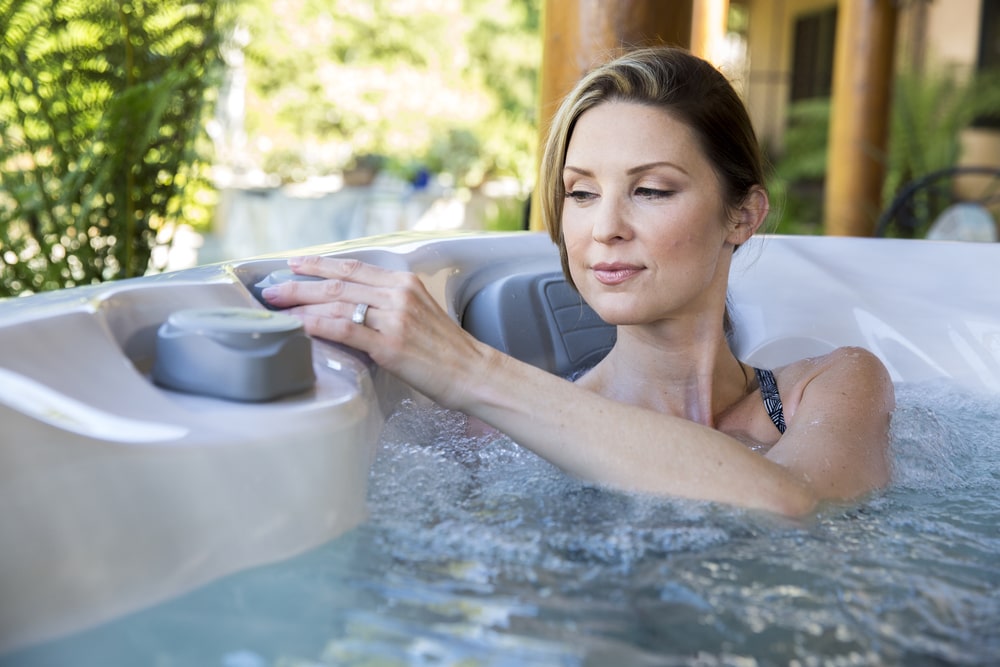
What about the maintenance costs? Looking at what we know about saltwater hot tubs, they have a tendency toward high pH, calcium build up, and give off sodium hydroxide as a byproduct. High pH, calcium, and sodium hydroxide are all corrosive over time. Even if you keep the water and shell clean, the calcium can still build up in areas that you can’t see or even reach – important areas like inside the pumps, heater, and other components.
To put this into perspective, calcium is the main ingredient of the “road salt” that crews put onto the roads after snow and ice storms. Everyone who lives in these areas knows how important it is to wash your car after driving on “salt” covered roads because leaving the salt to sit will lead to corrosion and rust over time. Your hot tub is no different. It is important to acknowledge that with a salt system, calcium will build up over time causing stress on the parts.
UV-C Comparison: Maintenance Costs
Not only do UV-C systems help reduce the amount of chemicals in the water, they are pretty easy to maintain too. Just replace the UV bulb once per year, and the Ozone generator once every 3-4 years.
Is Saltwater Sanitation Better for the Environment?
There is in fact a growing concern regarding the environmental impact of saltwater pools and spas. Local creeks and rivers are sensitive to salt concentrations and the saltwater released into the environment when saltwater pools and spas are drained can cause serious damage and even kill plants and animals downstream. Some US Cities have imposed regulations on saltwater pools and spas already, and it would be unsurprising if the trend continues in other cities and counties as the environmental impacts are assessed. For example, Ventura, CA requires saltwater swimming pool and spa water to be hauled via truck to a proper waste facility, adding cost and hassle when spas need to be drained. Santa Clarita, CA has imposed an outright ban of saltwater swimming pools due to concern that salts are polluting freshwater supplies.
The Bottom Line
Owning a hot tub is a different experience for everyone, and each person is going to have their preferences. Saltwater hot tubs are one option, however, they also come with drawbacks so they may not be for everyone. Ultimately you have to decide which things are important to you, and choose the hot tub that fits you.

